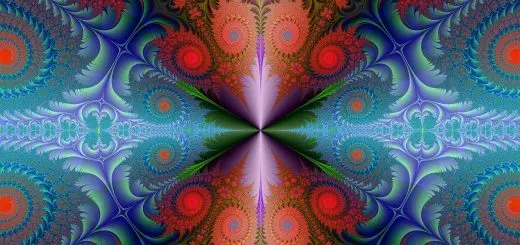Evil Eye and Its Connection to Jealousy and Envy

Looking for more amazing products? Check out our online store and explore our collection here! Happy shopping!
Before diving in, please note: This post is for informational purposes only. If you’d like to know more about how we approach topics, feel free to check out our friendly Disclaimer Page.
Hey there, amazing readers! 
We’re committed to delivering quality posts, and your support (even just sticking around despite the ads) means everything to us. So, bear with us, and thanks for helping us keep the good vibes rolling. Now, on to the fun stuff!
TRANSLATE BUTTON AT THE END OF THE ARTICLE
Understanding the Evil Eye Phenomenon
The belief in the Evil Eye is a widely held superstition that spans across various cultures and has persisted for centuries.
It is rooted in the idea that a person’s gaze has the power to bring misfortune or harm to those upon whom it falls.
This malevolent glare is believed to stem from feelings of jealousy or envy harbored by the individual casting the Evil Eye.
The Evil Eye phenomenon is often associated with feelings of fear and vulnerability, as people may unknowingly attract negative energy through the envy of others.
Origins of the Belief in the Evil Eye
The origins of the belief in the Evil Eye can be traced back to ancient civilizations such as Mesopotamia, Greece, and Rome.
In these early societies, the concept of the Evil Eye was deeply ingrained in their cultural and religious practices.
It was believed that the Evil Eye could bring about illness, infertility, or even death.
Over time, this belief spread to other parts of the world, taking on new interpretations and variations, but retaining its core association with jealousy and envy.
The Link Between Jealousy and the Evil Eye
Jealousy is often cited as the primary emotion behind the Evil Eye phenomenon.
When someone feels envious of another person’s success, possessions, or happiness, they may inadvertently cast the Evil Eye upon them.
This envy can manifest as negative energy that is believed to have the power to cause harm or misfortune.
In many cultures, jealousy is seen as a destructive force that can lead to the casting of the Evil Eye, highlighting the strong connection between these two concepts.
Envy as a Driving Force Behind the Evil Eye
Envy is another key emotion that drives the belief in the Evil Eye.
When someone covets what another person has, whether it be material possessions, relationships, or success, they may wish harm upon them out of spite or resentment.
This malicious intent can manifest as the Evil Eye, with the envious person unknowingly projecting negative energy towards their target.
Envy is a powerful motivator that can fuel the belief in the Evil Eye, as it reflects the darker aspects of human nature and the desire to see others fail.
Cultural Perspectives on the Evil Eye
The belief in the Evil Eye varies widely across different cultures, with each society having its own unique interpretations and rituals for protection.
In some cultures, the Evil Eye is seen as a potent force that must be actively guarded against through talismans, prayers, or amulets.
In others, the Evil Eye is viewed as a natural phenomenon that can be countered through acts of benevolence or through spiritual practices.
Regardless of the cultural context, the belief in the Evil Eye underscores the universal human experience of jealousy, envy, and the desire for protection against negative influences.
Symptoms of Being Affected by the Evil Eye
Those who believe they have been targeted by the Evil Eye may experience a range of physical and emotional symptoms.
These can include feelings of fatigue, irritability, or unexplained illnesses.
Some people may also notice a sudden string of bad luck or unexpected setbacks in various areas of their lives.
These symptoms are often attributed to the influence of the Evil Eye and are seen as signs that protective measures need to be taken to ward off its effects.
Protection Against the Evil Eye
To protect oneself against the Evil Eye, individuals may engage in various rituals and practices aimed at deflecting negative energy and promoting positivity.
This can involve wearing talismans or amulets believed to ward off the Evil Eye, reciting prayers or mantras for protection, or performing cleansing ceremonies to rid oneself of malevolent influences.
Different cultures have their own unique methods for safeguarding against the Evil Eye, reflecting the diversity of beliefs and traditions surrounding this ancient phenomenon.
Rituals to Ward Off Envy and Malicious Intentions
Rituals to ward off envy and malicious intentions are often deeply ingrained in cultural practices aimed at protecting individuals from the harmful effects of the Evil Eye.
These rituals can range from simple gestures such as wearing a blue bead or displaying a protective symbol, to more elaborate ceremonies involving incantations or blessings.
By engaging in these rituals, people seek to create a barrier against negative energy and shield themselves from the jealousy and envy of others.
Understand the Powerful Law of Karma and Its Impact – Explore Here!
Historical Accounts of the Evil Eye’s Influence
Throughout history, there have been numerous accounts of the Evil Eye’s influence on individuals and communities.
From ancient civilizations to medieval Europe and beyond, stories of the Evil Eye causing harm or misfortune have been passed down through generations.
These historical accounts often serve as cautionary tales, warning people of the dangers of jealousy and envy, and the need to protect oneself from the negative effects of the Evil Eye.
While some may dismiss these accounts as mere superstition, others take them as a serious reminder of the power of belief and perception.
Modern Interpretations of the Evil Eye
In modern times, the belief in the Evil Eye continues to persist in various forms, adapting to the changing cultural landscape while retaining its core associations with jealousy and envy.
While some may view the Evil Eye as a quaint superstition of the past, others still take it seriously and actively seek protection against its supposed effects.
The Evil Eye has found its way into popular culture, with talismans and symbols associated with warding off negative energy becoming trendy fashion statements.
Despite the advancements of science and technology, the belief in the Evil Eye remains a potent force in many societies around the world.
Psychological Explanations for the Evil Eye
Psychologists have sought to explain the phenomenon of the Evil Eye from a scientific perspective, attributing its effects to the power of suggestion and the influence of social dynamics.
Some researchers suggest that the belief in the Evil Eye may stem from a deep-seated fear of the unknown and a desire to control one’s environment.
Others point to the psychological impact of jealousy and envy on individuals, highlighting the ways in which these emotions can manifest as physical symptoms or negative outcomes.
While the Evil Eye may not have a tangible basis in reality, its psychological implications are real for those who believe in its power.
The Role of Belief and Perception in the Evil Eye Syndrome
Belief and perception play a crucial role in the Evil Eye syndrome, shaping the way individuals interpret their experiences and interactions with others.
Those who believe in the power of the Evil Eye may be more prone to attributing negative events to its influence, leading to a heightened sense of vulnerability and fear.
On the other hand, skeptics may dismiss the idea of the Evil Eye as mere superstition, viewing its effects as purely coincidental or the result of psychological factors.
Ultimately, the role of belief and perception in the Evil Eye syndrome highlights the complex interplay between culture, psychology, and human behavior in shaping our understanding of the world around us.
Conclusion
The belief in the Evil Eye and its connection to jealousy and envy is a fascinating aspect of human culture that has endured for centuries.
From ancient civilizations to modern societies, the concept of the Evil Eye continues to captivate our imaginations and challenge our perceptions of the world.
While the roots of this belief may lie in superstition and folklore, its influence on human behavior and interactions is undeniable.
Whether viewed as a harmless superstition or a potent force to be reckoned with, the Evil Eye serves as a powerful reminder of the complex emotions that drive us and the need for protection against negative influences.
As we navigate the complexities of our ever-evolving world, the belief in the Evil Eye remains a testament to the enduring power of belief and perception in shaping our lives.

The Enlightenment Journey is a remarkable collection of writings authored by a distinguished group of experts in the fields of spirituality, new age, and esoteric knowledge.
This anthology features a diverse assembly of well-experienced authors who bring their profound insights and credible perspectives to the forefront.
Each contributor possesses a wealth of knowledge and wisdom, making them authorities in their respective domains.
Together, they offer readers a transformative journey into the realms of spiritual growth, self-discovery, and esoteric enlightenment.
The Enlightenment Journey is a testament to the collective expertise of these luminaries, providing readers with a rich tapestry of ideas and information to illuminate their spiritual path.
Our Diverse Expertise
While our primary focus is on spirituality and esotericism, we are equally passionate about exploring a wide range of other topics and niches 

To ensure we provide the most accurate and valuable insights, we collaborate with trusted experts in their respective domains 
Our blog originally focused on spirituality and metaphysics, but we’ve since expanded to cover a wide range of niches. Don’t worry—we continue to publish a lot of articles on spirituality! Frequently visit our blog to explore our diverse content and stay tuned for more insightful reads.
Hey there, amazing reader! 
Check out our store here and take a peek at some of our featured products below! Thanks for being awesome!












